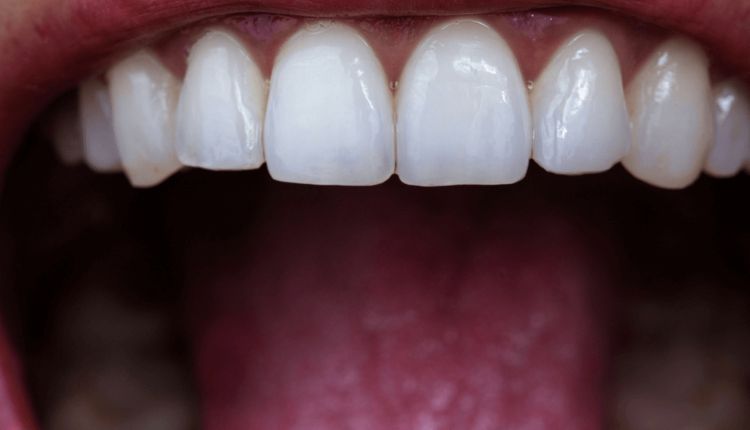Tooth extraction is sometimes needed during orthodontic treatment to create space for proper alignment and improve oral health. Removing certain teeth can lead to better function and a more attractive smile. Understanding the reasons and process behind extractions helps patients make informed decisions.
Why Orthodontists Recommend Tooth Extraction
Several factors may lead an orthodontist to recommend tooth extraction as part of a treatment plan. The most common reason is overcrowding, which occurs when there isn’t enough space in the jaw to accommodate all teeth properly.
Severe Overcrowding
When teeth compete for limited space, they often become crooked, overlapped, or rotated. Extracting specific teeth creates the necessary room for remaining teeth to move into their correct positions. This approach is particularly beneficial for patients with significant crowding that cannot be resolved through expansion techniques alone.
This dentist who does dental implants in Salem MA adds that the decision to extract teeth for orthodontic purposes is always a carefully considered step in the treatment plan, made only after the orthodontist confirms that no non-extraction method can achieve a stable, aesthetic result. While extractions are primarily done to alleviate severe overcrowding and prevent future problems like impacted teeth, they are also strategically performed to correct significant bite issues and ensure that the final alignment is stable and supports the patient’s overall oral health.
Jaw Size and Tooth Size Discrepancy
Some patients have teeth that are too large for their jaw size. This discrepancy makes it impossible to achieve proper alignment without creating additional space. Removing one or more teeth allows the orthodontist to balance the relationship between jaw size and tooth size.
Protruding Teeth
Patients with severely protruding front teeth may benefit from extractions to help retract these teeth into a more favorable position. This not only improves the appearance of the smile but also enhances lip support and facial profile.
Impacted or Problematic Wisdom Teeth
Wisdom teeth that cannot properly emerge or that threaten the stability of orthodontic treatment results are often removed. These teeth can push against other teeth, potentially causing crowding or shifting after orthodontic treatment is complete.
The Tooth Extraction Process for Orthodontic Patients
Understanding what happens during an orthodontic extraction can help alleviate anxiety about the procedure. The process is typically straightforward and performed with careful attention to the patient’s comfort.
Pre-Extraction Planning
Before any extraction, the orthodontist conducts a thorough examination, including X-rays and digital models of the teeth. This comprehensive assessment helps determine which teeth should be removed and how the extraction will benefit the overall treatment plan.
The Extraction Procedure
Most orthodontic extractions are performed by an oral surgeon or the patient’s general dentist, working in coordination with the orthodontist. The procedure typically involves local anesthesia to numb the area completely. Simple extractions usually take just a few minutes per tooth.
For patients requiring more extensive work, such as full mouth dental implants like those offered in Harrisonburg, VA, the extraction process may be coordinated with implant placement procedures.
Timing with Orthodontic Treatment
The timing of extractions varies depending on the individual treatment plan. Some patients have teeth removed before getting braces, while others may have extractions during active orthodontic treatment. The orthodontist carefully coordinates this timing to optimize treatment efficiency and results.
Post-Extraction Care and Recovery
Proper care after tooth extraction is essential for healing and ensuring orthodontic treatment can proceed as planned.
Immediate Post-Extraction Care
Following extraction, patients receive detailed instructions for caring for the extraction sites. This typically includes avoiding vigorous rinsing, using ice packs to minimize swelling, and taking prescribed or recommended pain medications as needed.
Healing Timeline
Most extraction sites heal within one to two weeks, though complete healing of the underlying bone takes several months. Patients can usually return to normal activities within a day or two, depending on the complexity of the extraction.
Coordination with Orthodontic Treatment
If braces are already in place, the orthodontist may need to adjust the treatment plan temporarily to accommodate healing. New patients typically wait a few weeks after extraction before beginning active orthodontic treatment.
Benefits of Orthodontic Treatment After Extraction
While removing teeth might seem like a step backward, strategic extractions often lead to superior treatment outcomes.
Improved Tooth Alignment
Creating adequate space allows all remaining teeth to move into their ideal positions. This results in better alignment, improved bite function, and a more attractive smile.
Enhanced Facial Aesthetics
Properly aligned teeth contribute to better facial proportions and lip support. Patients who initially had protruding teeth often see significant improvements in their facial profile after extraction and orthodontic treatment.
Better Long-Term Stability
Teeth that have adequate space are more likely to remain in their corrected positions over time. Overcrowded corrections without extractions may be more prone to relapse.
Improved Oral Health
Straight, properly spaced teeth are easier to clean effectively. This leads to better oral hygiene, reduced risk of decay and gum disease, and improved overall oral health throughout life.
Addressing Common Concerns About Tooth Extraction
Many patients have reservations about orthodontic extractions. Understanding the facts can help address these concerns.
“Won’t I Have Gaps in My Smile?”
This is perhaps the most common concern. However, orthodontic treatment is specifically designed to close extraction spaces completely. When treatment is finished, most people cannot tell that teeth were ever removed.
“Will My Face Look Sunken?”
Modern orthodontic planning takes facial aesthetics into careful consideration. Extractions are only recommended when they will maintain or improve facial appearance. In many cases, patients actually experience enhanced facial balance.
“Are There Alternative Treatments?”
Orthodontists always consider alternatives to extraction, such as palatal expansion, interproximal reduction, or distalization. However, when these alternatives cannot achieve the desired results, extraction remains the best option.
Conclusion
Tooth extractions may be needed during orthodontic treatment to resolve spacing issues and improve results. They are recommended only when beneficial, and working with experienced professionals ensures a tailored plan. Ask questions to understand the process and achieve a healthier, confident smile.






